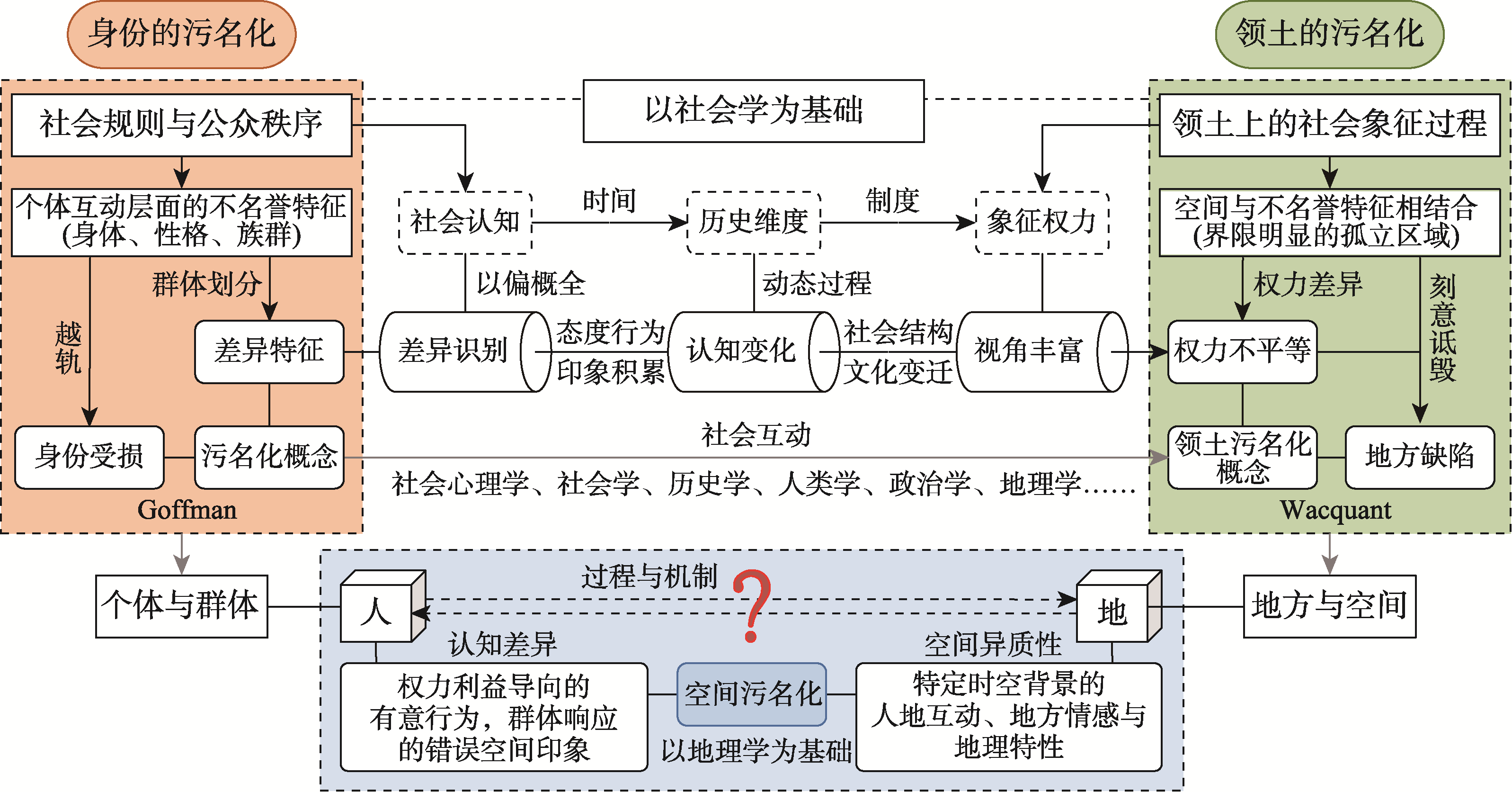

Spatial stigmatization: Process and formation mechanism
Received date: 2023-03-27
Revised date: 2023-12-30
Online published: 2024-06-19
Supported by
National Social Science Foundation of China(21BGL257)
Identity and territorial stigmatizations have been studied extensively over a long period of time. However, the interaction between the two has been relatively underexplored. Aimed at retrospection and clarification of the connotations of stigmatization, this study attempts to explore the relationship between pers on-place stigmatization from a geographic perspective. This paper proposes the concept of spatial stigmatization and systematically interprets its geographic process and formation mechanism. The paper puts forward the following arguments. First, spatial stigmatization involves stigmatizers who devalue a place's perceived value and identity construction in a specific historical environment and at a particular cognitive level through incomplete, inaccurate, and non-objective perception of space and its dependent people and objects, resulting in symbolic stigmatization of the place. Second, spatial stigmatization entails imagery construction, separation of the subject, and group interaction in the context of heterogeneous geo-spatial pattern and spatial positioning and symbolization. This forms local or heterogeneous types of direct and indirect stigmatization in different directions and at varying distances on various scales. Third, spatial inequality, exploitation and the struggle for rights, fear and avoidance, and topophilia and social order, are the bases of spatial stigmatization. Additionally, the spatial concentration and internalization of stigmatization is facilitated by complex interactions between people and places through perception, identification, positioning, and marking. This creates a spatial stigmatization mechanism that generates, disseminates, reacts, and reproduces in a continuous cycle. In the face of widespread spatial stigmatization, the key to eliminating its adverse effects lies in rebuilding a place through a new narrative system, correctly understanding the relationship between people and the Earth, and ultimately realizing "de-stigmatization space" in the context of the universal value of the human destiny community.

LI Wei , YANG Wen , WANG Lucang , QI Jianwu , WANG Zongxiang . Spatial stigmatization: Process and formation mechanism[J]. Acta Geographica Sinica, 2024 , 79(6) : 1449 -1463 . DOI: 10.11821/dlxb202406006
| [1] |
|
| [2] |
|
| [3] |
|
| [4] |
[管健. 污名的概念发展与多维度模型建构. 南开学报(哲学社会科学版), 2007(5): 126-134.]
|
| [5] |
|
| [6] |
|
| [7] |
[姚星亮, 黄盈盈, 潘绥铭. 国外污名理论研究综述. 国外社会科学, 2014(3): 119-133.]
|
| [8] |
|
| [9] |
|
| [10] |
|
| [11] |
|
| [12] |
|
| [13] |
|
| [14] |
|
| [15] |
|
| [16] |
|
| [17] |
[郭金华. 污名研究: 概念、理论和模型的演进. 学海, 2015(2): 99-109.]
|
| [18] |
|
| [19] |
|
| [20] |
|
| [21] |
|
| [22] |
|
| [23] |
|
| [24] |
|
| [25] |
|
| [26] |
|
| [27] |
|
| [28] |
|
| [29] |
[谢立中. 论西方社会学理论的逻辑. 社会学评论, 2022, 10(5): 15-35.]
|
| [30] |
|
| [31] |
[傅伯杰. 地理学: 从知识、科学到决策. 地理学报, 2017, 72(11): 1923-1932.]
|
| [32] |
[楚义芳. 地理学的逻辑方法和基本法则. 地理学报, 1988, 43(3): 250-257.]
|
| [33] |
|
| [34] |
|
| [35] |
[吴俊范. 矛盾的“城市性”与近代上海棚户区的污名. 华东理工大学学报(社会科学版), 2016, 31(1): 19-29, 45.]
|
| [36] |
|
| [37] |
[盛彦丽. 河南人在外地—对地域污名的社会学解读[D]. 南京: 南京师范大学, 2013.]
|
| [38] |
|
| [39] |
|
| [40] |
|
| [41] |
[段义孚. 恋地情结. 北京: 商务印书馆, 2018.]
|
| [42] |
[段义孚. 逃避主义. 石家庄: 河北教育出版社. 2005.]
|
| [43] |
[段义孚. 无边的恐惧. 北京: 北京大学出版社. 2010.]
|
| [44] |
|
| [45] |
|
| [46] |
|
| [47] |
|
| [48] |
|
| [49] |
|
| [50] |
|
| [51] |
|
| [52] |
|
| [53] |
|
| [54] |
|
| [55] |
|
| [56] |
|
| [57] |
|
| [58] |
|
| [59] |
|
| [60] |
[吴俊范. 上海棚户区污名的构建与传递: 一个历史记忆的视角. 社会科学, 2014(8): 67-77.]
|
| [61] |
|
| [62] |
[李小云, 杨宇, 刘毅. 中国人地关系的历史演变过程及影响机制. 地理研究, 2018, 37(8): 1495-1514.]
|
/
| 〈 |
|
〉 |